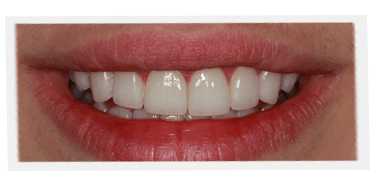
A continuation of Part 1 of Common Smile Problems: Gaps, Crowded, Crooked, and Missing Teeth. I trust you’ll find this information useful, enlightening, and informative. (Taken from my book, A Guide to the Perfect Smile.)
Crowded Teeth
Aesthetically, a tooth on its own may be properly proportioned but perceived as architecturally off because of its twisted and crowded position relative to its adjacent teeth. The way to solve this problem is not that different from what orthodontists would do: creating space and using crowns. At the end of the day, both types of procedures face the same challenge: there are too many teeth overall to fit the arch of the mouth. Space has to be created.
There are two ways to do so. One is to size the teeth down. If teeth are too wide proportionately for the space they are in, new crowns that are narrower than the original teeth can be fitted into the jaw. In extreme situations a tooth may be so crowded and out of alignment that it may actually have to be extracted, leaving a small space between the adjacent teeth. Part of this approach may involve taking out one or two teeth to create more room. The teeth beside the missing tooth may then be bonded or veneered to give the general appearance of being straight.
The second way is through veneering or adding crowns, to place the teeth into a position relatively forward from where they are – much as orthodontists would do. As the teeth are placed forward, the arch of the mouth is expanded. In this way, the teeth can be given the appearance of being straight.
Crooked Teeth
This problem is often believed to be the same as that of crowded teeth. The solutions for both are in fact generally the same. However, we often find, in a non-crowded situation, that individual teeth can be crooked or twisted on their own and not as part of a general space problem requiring a complete dentition solution.
It is often possible, when individual teeth are crooked in this way, to realign with a porcelain veneer or crown. Generally, the tooth must be sanded back on any sides that are out of alignment as a result of the twisting. If the space required to untwist the tooth is wider than what currently exists, it is often possible to sand back a slight amount from each of the adjacent teeth to create the space necessary for the untwisted tooth. If the tooth is in fact greatly twisted, the amount of sanding needed for this realignment may often encroach on the nerve of the tooth, requiring endodontic treatment. This treatment for untwisting teeth is always a calculated risk.
Missing Teeth
There are various ways to replace teeth, depending on the number of teeth missing, the location of the adjacent teeth, the relative root strength of the remaining teeth, the position of the gum line and bony support, and, obviously, cost, time, and individual expectations.
Although removable appliances in the form of acrylic dentures or cast partial dentures are usually more affordable, they are generally not the preferred aesthetic solution. Removable appliances in general are awkward and inconvenient to wear in the long term.
Bridge work is the most common solution, when clinically possible. However, what is usually required is the crowning of the adjacent teeth to the space. In most cases the patient’s teeth accommodate the artificial tooth. However, the fact that it is physically adjacent to the other teeth can cause a bulky and “full” feeling.
Currently, because of their high degree of success, today’s innovative new approaches to implant therapy are the preferred route. Placed ideally and properly, implants maintain integrity and the natural form to idealize the missing tooth problem.
Edward S. Philips, D.D.S.



